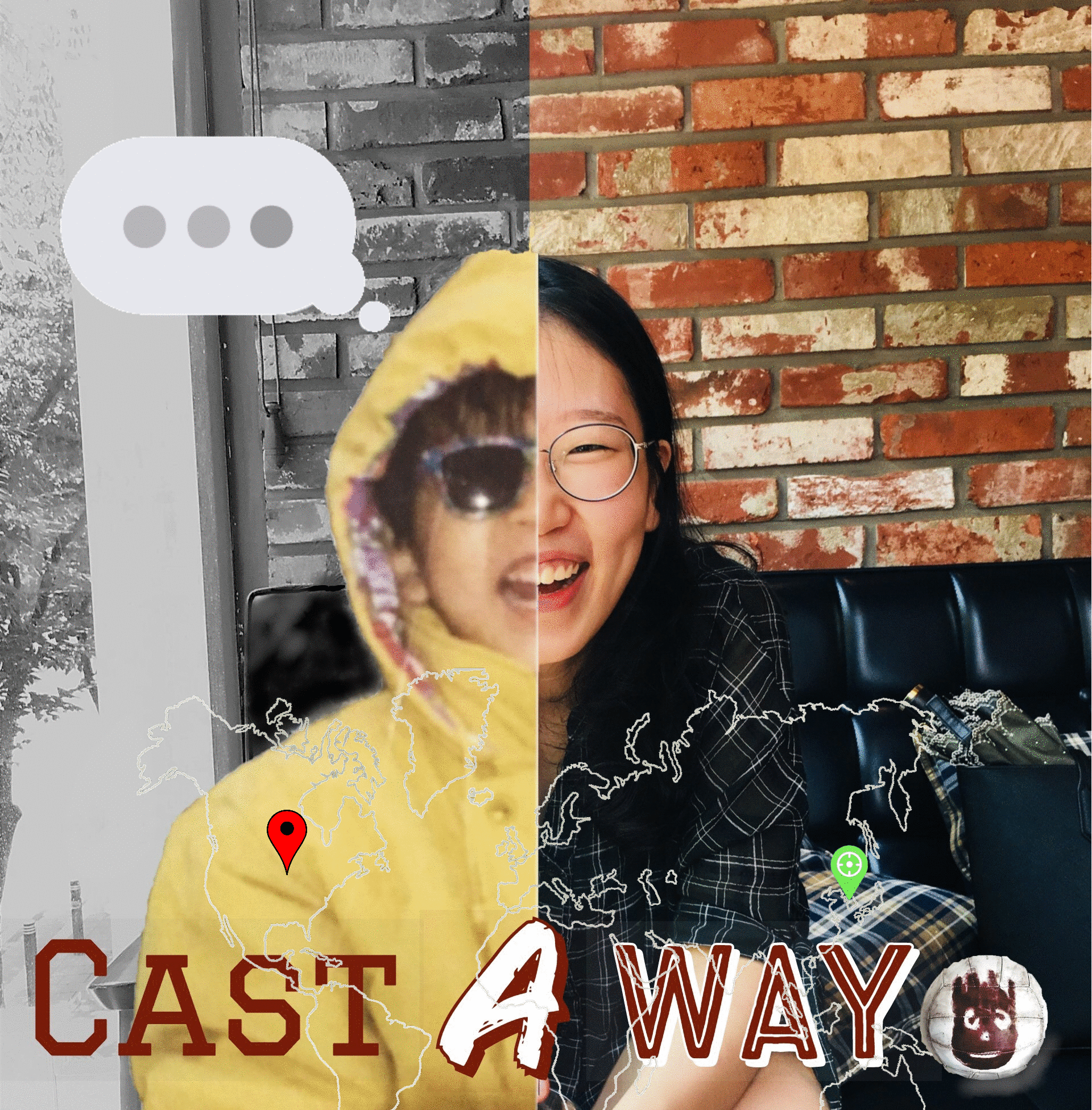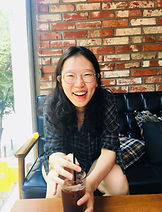Su Jin
Writing Across Media
Visual Project
Cast a Way



Goals
My project aims to communicate that casting a way that once considered to be unique opens up a new possibility. I developed the argument by showing the process of learning a new culture. Back in Korea, I used to walk on the left side of the sidewalk. ‘How is it going?’ was not on the list of greeting. Now, I walk on the right side. I answer back ‘I’m going great, how about you?’ I am mumbling like three years old, and the number of cultural colors that I can read is limited. But still, I am learning. By visually illustrating the personal example, I want to affect the audience to be open to change.
Affordances
I used Paint 3D, Adobe Spark, and online gif editors. These tools and my media literacy skills enabled me to demonstrate the argument. For the background image, I cropped the left half of the original picture, changed that portion black and white, and overlaid the modified version on the original picture. Using Paint 3D, I separated the layers from various pictures and added to the background image. This method allowed me to include elements such as the left half of me, world map, volleyball, and pin drops. For the text, I applied different fonts and colors to each term by using Adobe Spark. For the typing bubble, I incorporated it in the background image via online gif editors.
Audience
I am trying to reach the people who believe that there is the way to do things and encourage them to be open to change. The goal and target audience of this project affected me to present the message by visualizing a personal experience. One concern I have is that the target audience is implicit. Since the image is straightforward, it is easy to restrict the target to the people who are learning new cultures.
Decision Making Process
In the background image, I tried to map the spatial division of the image to that of the real world. I indicated locations using the world map and the pin drops from the most popular maps of each nation. The red one from Google and the green one from Naver represent the United States and South Korea, respectively. Through explicit visual cues, I intend to direct the audience to recognize two different layers of spatial division.
They also connect to the levels of cultural literacy in each space. Black and white background of the left side shows an incomplete understanding of the new culture. This is why I chose the picture of me wearing sunglasses when I was three years old. To further illustrate the lack of literacy, I added the typing bubble to depict my habit of mumbling or rehearsing what to say. In contrast, the right side contains a colorful background, and I am wearing glasses instead of sunglasses. By the background image, I want to contrast my level of cultural literacy between South Korea and the United States.
To elucidate the argument, I chose the phrase ‘Cast A Way.’ In addition, the design of the text is coherent to its meaning. I employed different fonts for each three words to exhibit that there are multiple ways to do things.
Theory / Course Readings
According to Wysocki, “the visual elements and arrangements of a text perform persuasive work.” In this project, I attempted to motivate the audience to be open minded. To achieve the goal, I selected three years old me as a symbol to denote me in a new culture. Monmonier even states that “an accurate map must tell white lies.” Although I am not three years old, I chose that photo as a symbol to “present a useful and truthful picture” of my experience.
Reflection
This project affects me to cast a way I see art and open up a new way of interpretation. Previously I thought any work of art should offer some aesthetic pleasure, and that is the purpose of art. As a result, I interpreted every deviation that a composer creates was to make an artifact attractive. While I was composing this project, I aimed to convey a message. Sometimes it hurts aesthetic beauty. I was unable to maximize visual pleasure, but it was pleasing in a different sense—a freedom that comes from expressing my thoughts. I learned that an argument can also be a purpose of art. Art is not only about generating immediate pleasure but about communicating an argument as well.
At first I planned to address that it is unsafe to consume canned tuna. I believe that I should avoid canned skipjack, because the Pacific Ocean, where most of the skipjack inhabits for around a decade, has been polluted by radiation coming out of Fukushima. I, however, was unsure whether my belief can be supported by solid evidence. Instead of insisting on my belief, I decided to express myself and present the problem that I am dealing with the most.
(Well) begun was half done. Regardless of how small a step was, it suggested what to do next. Dividing the image vertically hinted at applying black and white effect. The black and white effect gave me an idea of overlaying the photo when I was three years old. In fact, some ideas revealed my lack of skills. But googling and peer review helped me improve my media literacy skills and finish composing the artifact.
References
Monmonier, Mark. How to Lie with Maps. Chicago: University of Chicago Press, 1991.
87-112. Print.
Wysocki, Anne F. “The Multiple Media of Texts: How Onscreen and Paper Texts Incorporate
Words, Images, and Other Media.” What Does Writing and How It Does It:
An Introduction to Analysis of Text and Textual Practices. Eds. Bazerman,
Charls, and Prior, Paul. Mahwah, NJ: Lawrence Erlbaum, 2004. 1-34. Print.